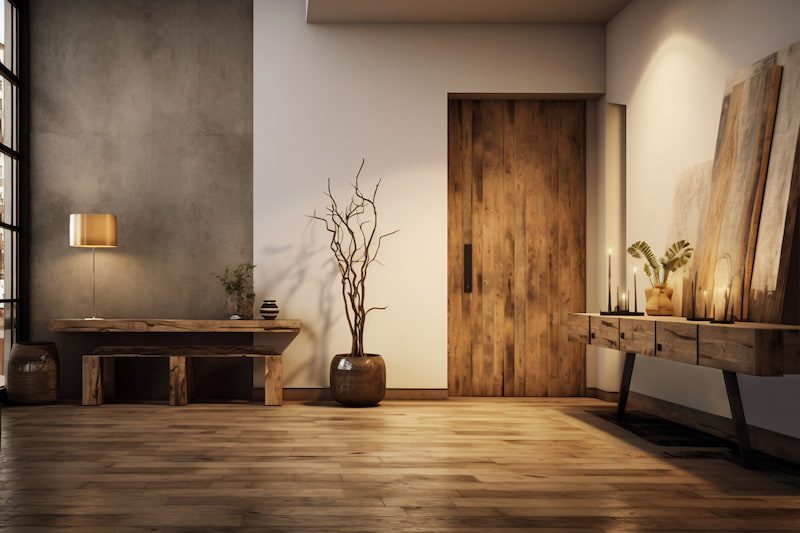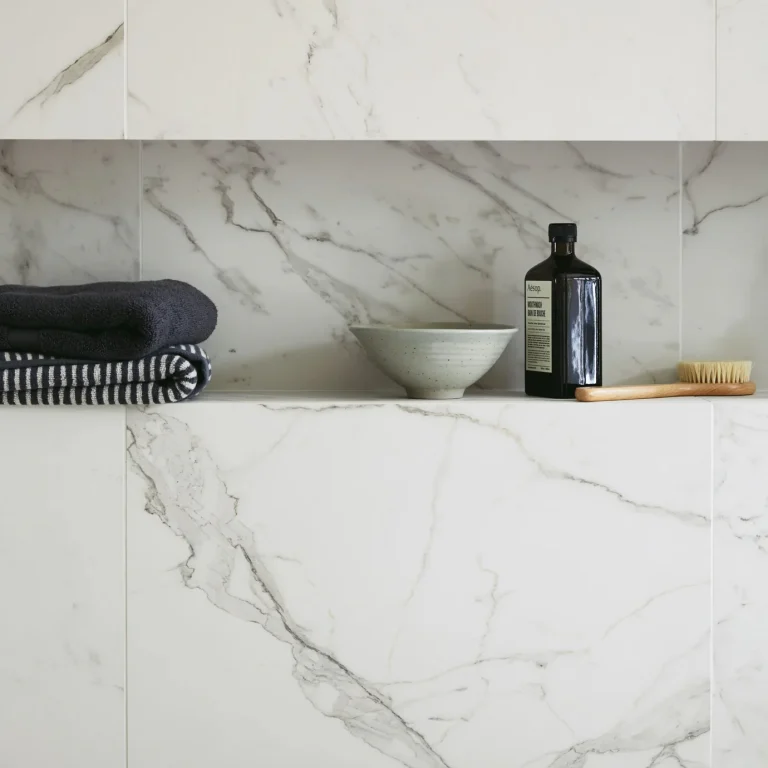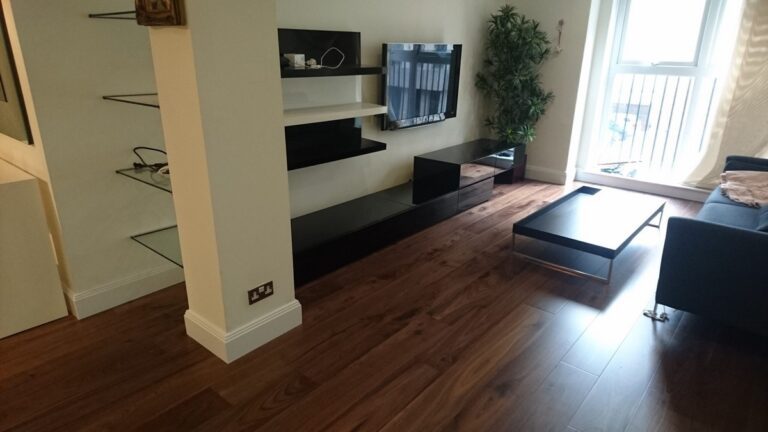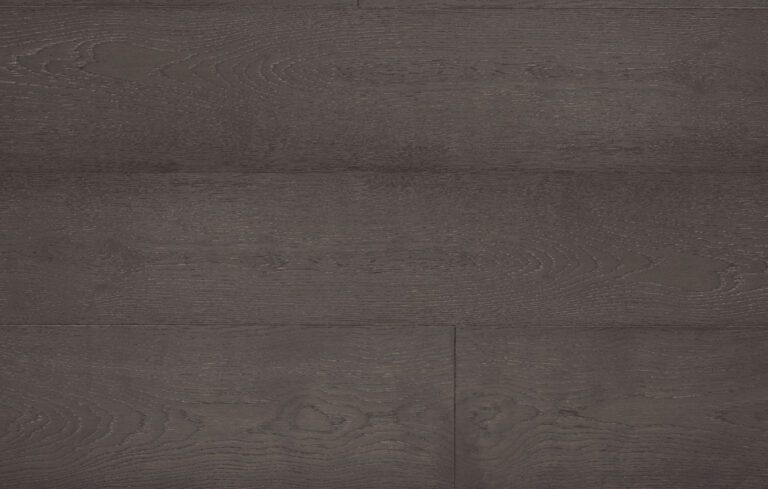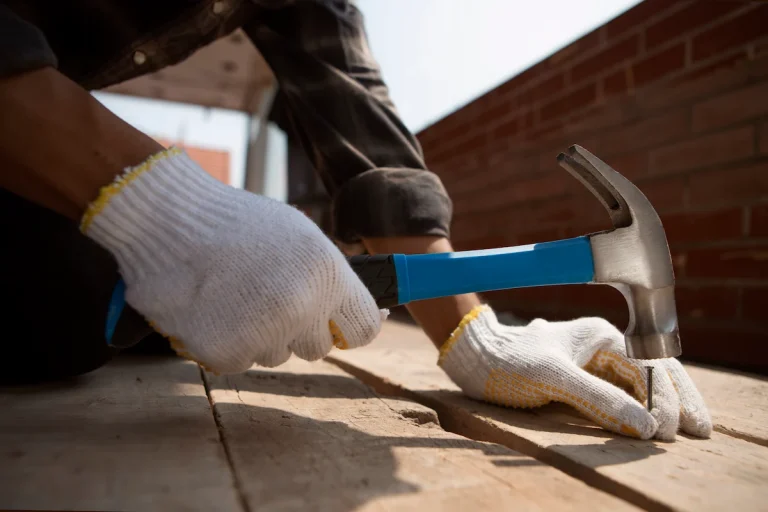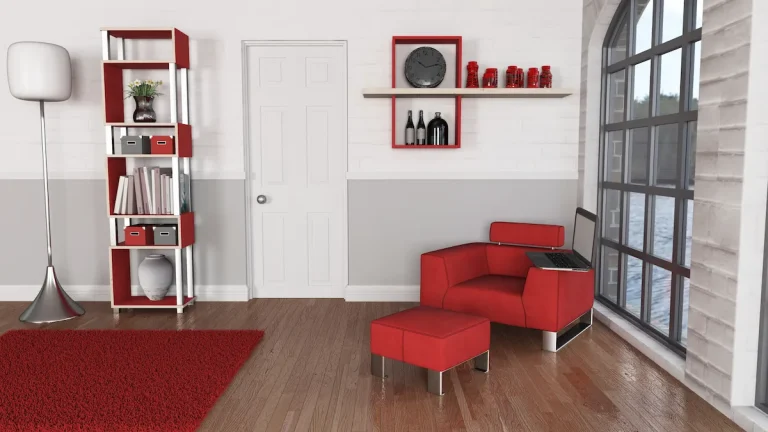Selecting the appropriate flooring for one’s home can be a challenging endeavour, particularly given the myriad of flooring options available in the market. Among the most favoured choices, laminate vs. hardwood flooring, each presenting distinct advantages and characteristics in terms of flooring durability and aesthetics.
This discussion will examine the definitions of laminate and hardwood flooring, the processes by which they are manufactured, and the benefits associated with each type. Furthermore, it will delineate the key differences between the two, assisting homeowners in determining which option aligns best with their needs, aesthetic preferences, flooring performance, and budgetary considerations.
What Is Laminate Flooring?
Laminate flooring has become a widely favoured option in home improvement projects due to its cost-effectiveness and versatility as a flooring material. It is one of the laminate advantages that makes it a popular choice in flooring materials. Unlike solid wood or engineered wood, laminate flooring mimics the appearance of hardwood while being composed of composite materials, making it an appealing choice for individuals seeking to enhance the aesthetic of their flooring without incurring significant expenses.
This flooring type is offered in a wide range of designs, colours, and styles, allowing it to cater to diverse residential flooring requirements and align with various home décor themes.
How Is Laminate Flooring Made?
Laminate flooring is produced through a multi-layer manufacturing process that integrates various materials to create a durable and visually appealing flooring solution.
This innovative flooring option typically comprises four primary layers, each serving a vital function in its overall performance and aesthetics, including moisture resistance and water damage protection. The first layer is a protective overlay, specifically designed to resist scratches and stains, thereby ensuring longevity.
Beneath this layer lies the decorative layer, which features realistic wood or stone patterns, accomplished through advanced printing technology.
The core layer, often made from high-density fibreboard (HDF), provides essential strength and stability, while the backing layer contributes moisture resistance and insulation.
Throughout the manufacturing process, sophisticated machinery employs advanced techniques to guarantee precision and quality control, resulting in a product that is not only aesthetically pleasing but also capable of withstanding daily wear and tear.
By understanding these intricate steps and components, one can truly appreciate how laminate flooring emerges as a practical choice for a variety of settings.
The Benefits of Laminate Flooring
Laminate flooring presents numerous advantages that render it an attractive option for both homeowners and tenants, particularly regarding affordability, durability, and ease of maintenance. These laminate pros make it suitable for various residential flooring needs.
One of the most notable benefits of laminate flooring is its capacity to replicate the appearance of hardwood while remaining more budget-friendly, making it a preferred choice for home improvement projects that require cost-effectiveness and align with budget considerations. Laminate flooring is engineered to endure the test of time, featuring a robust composition that resists scratches, stains, and fading. This durability ensures that even in high-traffic areas such as hallways and living rooms, the flooring retains its visual appeal for many years.
The installation process is generally straightforward, enabling even DIY flooring enthusiasts to achieve a professional finish without the necessity of hiring a contractor. This factor significantly aids in minimising overall project costs. Furthermore, maintenance is uncomplicated; a regular cleaning routine, which typically includes sweeping or vacuuming, is usually sufficient to maintain its pristine condition.
- Cost-effective alternative to hardwood
- High durability for heavy foot traffic
- Simple installation process
- Low maintenance requirements
What Is Hardwood Flooring?
Hardwood flooring is a classic and lasting option for residential settings, esteemed for its natural aesthetic, durability, and the value it contributes to homes, making it a valuable flooring investment. It is available in two primary categories: solid wood and engineered wood.
Hardwood flooring presents a variety of styles, colours, and finishes that can seamlessly complement any home décor, keeping up with the latest flooring trends. Solid wood flooring is constructed from a single piece of timber, ensuring both longevity and a traditional appearance. In contrast, engineered wood offers improved stability, making it suitable for various environments, including spaces equipped with underfloor heating.
How Is Hardwood Flooring Made?
The manufacturing process of hardwood flooring entails the careful selection of high-quality timber and its transformation into planks through precise milling techniques.
This process commences with the sourcing of wood species, in which producers identify and procure timber from sustainable forests, thereby ensuring both quality and ecological responsibility. Hardwood maintenance and care are essential to extend its lifespan. Upon selection, the wood undergoes a meticulous milling process that shapes the raw timber into uniform planks, enhancing both aesthetic appeal and structural integrity.
Following milling, a series of finishing processes are implemented to protect the surface and enhance the natural beauty of the wood. Solid wood benefits include its timeless appeal and the unique characteristics of each wood species. This typically includes sanding, staining, and sealing, all of which contribute to the overall durability and appearance of the flooring.
- Sourcing: Responsibly harvested timber from sustainable forests.
- Milling: Transforming raw timber into consistent planks.
- Finishing: Enhancing durability and aesthetics through various treatments.
These detailed steps not only exemplify craftsmanship but also underscore a commitment to producing high-quality hardwood flooring that meets the expectations of discerning customers.
The Benefits of Hardwood Flooring
Hardwood flooring offers numerous advantages, making it a highly desirable option for homeowners seeking to invest in high-quality flooring that endures over time. One of the primary benefits of solid wood is its natural beauty, which enhances the aesthetics of any room and significantly contributes to a home’s overall value. With proper maintenance and care, hardwood floors are renowned for their longevity, allowing them to last for decades and thus representing a prudent investment in flooring.
The advantages of hardwood flooring extend beyond mere visual appeal and durability, offering notable flooring features:
- Versatility: This type of flooring complements a wide range of interior design styles, from modern to traditional.
- Ease of Maintenance: In comparison to other flooring options, hardwood is simpler to clean and maintain, requiring only regular sweeping and occasional refinishing.
- Increased Property Value: Investing in hardwood floors can substantially enhance a property’s market appeal, as many prospective buyers prefer homes featuring such flooring.
- Underfloor Heating Compatibility: Engineered wood is suitable for installation over underfloor heating systems.
Homeowners understand that selecting hardwood not only enriches their living environment but also secures a durable, attractive, and valuable asset for the future.
The Differences Between Laminate and Hardwood
When evaluating flooring options for a home, it is crucial to comprehend the distinctions between laminate and hardwood flooring, as each presents unique advantages and disadvantages that can influence the decision-making process.
Laminate flooring is generally more cost-effective and simpler to install, rendering it an appealing choice for budget-conscious individuals. Conversely, hardwood flooring is frequently regarded as a more premium option, celebrated for its natural aesthetic and durability.
By assessing factors such as flooring durability, installation costs, maintenance requirements, and flooring lifespan, one can make an informed decision that aligns with their lifestyle and home environment.
1. Materials Used
The materials utilised in laminate flooring and hardwood flooring exhibit significant differences, which impact their overall performance, flooring comfort, and aesthetic appeal.
Laminate flooring typically comprises multiple composite layers designed to replicate the appearance of natural wood while providing enhanced durability. The core layer is generally constructed from high-density fibreboard (HDF), which is combined with a moisture-resistant resin, ensuring a robust and stable foundation. The surface features a high-resolution printed design that captures the intricate details of wood grain, all protected by a transparent wear layer that resists scratches and stains.
In contrast, hardwood flooring can be categorised into solid and engineered varieties. Each type has distinct flooring characteristics and offers different benefits depending on the usage requirements.
- Solid hardwood is crafted from a single piece of timber, sourced from various species such as oak, maple, or cherry, each offering distinct aesthetic and structural characteristics.
- Engineered hardwood consists of multiple layers, with a top layer of genuine wood bonded to a core of plywood or HDF, effectively combining the beauty of wood with increased stability against humidity.
Ultimately, the decision between these materials depends on individual preferences, specific application requirements, and a thorough flooring evaluation.
2. Durability and Wood Flooring Disadvantages
Durability is an essential consideration when comparing laminate and hardwood flooring, as it significantly impacts their lifespan, maintenance requirements, and understanding of wood flooring disadvantages. Understanding how each type performs under various conditions can guide your decision, particularly if you are investing in flooring for high-traffic areas or households with pets and children. The ability of both options to withstand different moisture levels and physical impacts can greatly influence your long-term satisfaction with the flooring choice.
When evaluating the durability of these flooring options, laminate and hardwood present distinct characteristics that merit attention:
- Laminate flooring is designed with a wear layer that provides strong resistance to scratches and dents, making it well-suited for busy living spaces.
- Hardwood flooring, while offering natural beauty, may necessitate regular refinishing to preserve its appearance and endure wear over time.
- Regarding moisture resistance, laminate typically demonstrates greater water resistance; however, prolonged exposure can still result in swelling, whereas hardwood is prone to warping or cupping when subjected to excess moisture.
Ultimately, the decision between these two materials depends on your specific needs and environment, as both possess unique advantages in terms of durability.
3. Cost and Flooring Choices
A cost comparison between laminate and hardwood flooring is critical for homeowners who seek to make informed, budget-conscious decisions without sacrificing quality.
To navigate this significant decision effectively, it is essential to examine both material costs and installation expenses, as these factors can greatly influence the overall budget.
Laminate flooring generally offers a more economical option initially; however, installation costs can fluctuate based on the type of subflooring required and the accessibility of the space. In contrast, hardwood flooring typically necessitates a higher upfront investment in both materials and labour, but it can provide greater long-term value due to its durability and aesthetic appeal.
- When selecting laminate, one should consider its ease of installation as a potential cost-saving factor.
- Evaluating the lifespan of hardwood can often justify the higher initial price.
Ultimately, a thorough assessment of these factors will assist in determining which flooring type aligns with both financial objectives and long-term aspirations.
4. Installation Process
The flooring installation process for laminate and hardwood flooring differs significantly, influencing the overall convenience and time required for homeowners engaging in DIY flooring projects.
When considering flooring installation, thorough preparation is essential. Homeowners should ensure that the subfloor is level, clean, and dry. This preliminary step is critical, as it establishes the foundation for a successful installation of either type of flooring.
- For laminate flooring, a floating installation method is commonly employed. This technique allows the planks to expand and contract independently of the subfloor, making it particularly suitable for DIY enthusiasts.
- Conversely, hardwood flooring typically necessitates either glue-down or nail-down methods, which may require more advanced skills and specialised tools.
Ultimately, while competent DIYers may successfully undertake laminate installation, it is advisable to consider professional installation for hardwood flooring to achieve optimal results and long-term durability. Consulting with industry experts can offer valuable insights tailored to specific home environments.
5. Maintenance and Cleaning
Maintenance and cleaning requirements for laminate and hardwood flooring differ significantly, which can greatly influence long-term satisfaction and upkeep, including cleaning laminate effectively.
Understanding these differences is essential for homeowners who wish to preserve the beauty and longevity of their floors. Laminate flooring generally requires less intensive care compared to hardwood, which is more vulnerable to scratches and moisture. To maintain laminate floors, a straightforward routine of sweeping or vacuuming followed by damp mopping is sufficient to keep them looking pristine. Conversely, hardwood floors benefit from a more meticulous approach; using products specifically formulated for hardwood, in addition to regular polishing, enhances their natural lustre.
- Cleaning methods: For laminate flooring, it is advisable to use pH-neutral cleaners, which aid in cleaning laminate effectively, while hardwood requires a soft cloth to prevent damage.
- Care tips: Utilising area rugs can protect both types of flooring from foot traffic and potential scuffs, contributing to better flooring maintenance.
Homeowners should also be aware of potential challenges, such as hardwood’s susceptibility to water damage and laminate’s inability to be refinished in the event of wear. This makes proactive maintenance all the more essential.
Laminate vs. Hardwood: Which Is Better?
Selecting the most suitable flooring option for a residence requires thorough consideration of several factors, including individual preferences, lifestyle, and budgetary constraints. A comprehensive flooring guide can assist in navigating these choices.
Whether one favours laminate flooring for its cost-effectiveness and ease of installation, or hardwood flooring for its aesthetic appeal and durability, a clear understanding of one’s priorities will facilitate the decision-making process.
By assessing elements such as flooring performance, design preferences, and the alignment of each option with overall home improvement objectives, individuals can ultimately determine the flooring solution that best meets their requirements.
Factors to Consider Before Choose Laminate or Hardwood Flooring
When evaluating flooring options for a residence, it is essential to consider several key factors to ensure a satisfactory investment that aligns with both the living space and lifestyle of the inhabitants.
As homeowners undertake the process of selecting the appropriate flooring, they often find themselves assessing various elements that influence their final decision. The aesthetic appeal of a flooring option is of utmost importance; it must complement the existing décor and overall ambience of the home. Additionally, considerations regarding durability are critical, particularly in high-traffic areas where the potential for wear and tear is significant. Thoroughly understanding flooring styles can also guide one’s choice.
- Cost: Budget constraints frequently guide homeowners’ choices, influencing whether they opt for luxury vinyl planks or more economical laminate. A detailed cost comparison can provide further clarity.
- Installation Ease: Some flooring options facilitate do-it-yourself projects, which can be cost-effective, while others necessitate professional installation. Choosing the right DIY flooring method can enhance this experience.
- Maintenance: The required level of upkeep varies considerably among flooring types; certain materials are easily maintained through sweeping and mopping, while others may demand more intensive care.
By understanding these factors, homeowners are better equipped to make informed decisions, ultimately leading to a flooring choice that is both functional and enhances the cohesion and charm of their home.
1. Budget
Budget considerations are critical in the decision-making process between laminate and hardwood flooring, as they significantly impact the overall expenditure associated with home improvement projects. Proper flooring recommendations can optimize budget efficiency.
When evaluating flooring options, it is essential to consider not only the initial cost but also the long-term investment value linked to each material. Generally, laminate flooring is more affordable, often appealing to those with budget constraints, with prices ranging from £0.80 to £2 per square foot. In contrast, hardwood flooring typically falls within the range of £3 to £12 per square foot, depending on the type of wood and its quality.
While laminate may present initial cost savings, it often lacks the durability and refined aesthetic appeal of hardwood, which can enhance a property’s resale value.
- Initial costs: Laminate is less expensive.
- Long-term value: Hardwood may provide a higher return on investment.
- Resale potential: Buyers frequently favour hardwood for upscale homes.
Consequently, a thorough assessment of both immediate and ongoing expenses, along with potential market demand, is essential for making an informed decision.
2. Location and Usage
The selection and application of flooring within a residence are critical factors that can influence the appropriateness of laminate versus hardwood flooring. Evaluating flooring design and flooring aesthetics can further play a crucial role in making the right choice.
When determining the most suitable flooring option, it is essential to evaluate the specific requirements of each area. For example, kitchens typically encounter high levels of moisture and foot traffic; therefore, laminate may be a practical choice due to its water resistance and ease of maintenance. Conversely, the living room, often serving as a central gathering space, may benefit from the warmth and natural beauty of hardwood, or wood flooring, which contributes a sense of elegance and comfort.
Key considerations include:
- Water Resistance: Laminate is engineered to endure spills and splashes, making it ideal for high-moisture environments.
- Durability: Hardwood can be vulnerable to scratches and dents; thus, the choice of flooring plays a significant role in maintaining overall aesthetics and longevity. Additionally, regular flooring repairs may be necessary to preserve its condition.
- Style Versatility: While laminate provides a variety of design options, it is important to note that nothing compares to the unique richness of natural hardwood.
Ultimately, a comprehensive understanding of these flooring characteristics, including laminate lifespan and types, will assist homeowners in making informed decisions that align with their specific needs and lifestyle.
3. Aesthetic Preference
Aesthetic preference is a crucial factor in flooring selection, as it can profoundly influence the overall appearance and atmosphere of a home environment.
Selecting the appropriate flooring entails more than mere functionality; it embodies the essence of personal style. Both laminate and hardwood flooring options offer a wide array of designs and finishes, enabling homeowners to cultivate a space that aligns with their aesthetic vision. For example, laminate flooring can replicate various materials, ranging from rustic wood to sleek stone, while hardwood presents unique grain patterns and rich hues.
- Laminate Flooring: Available in a multitude of colours, textures, and styles, making it versatile enough to complement both contemporary and traditional décor.
- Hardwood Flooring: Renowned for its durability and timeless elegance, hardwood is available in finishes that enhance its natural beauty, contributing to a sophisticated ambience.
These flooring choices not only affect immediate visual appeal but also establish a foundation for cohesive interior design, allowing for personalised touches to thrive.
4. Environmental Impact
Considering the environmental impact of flooring choices is becoming increasingly significant for consumers who are seeking sustainable and eco-friendly options. Ensuring flooring quality is also crucial in making responsible decisions.
In today’s market, the decision between laminate and hardwood flooring is influenced heavily by sustainability factors. Each option possesses distinct characteristics that can have a notable effect on their overall environmental footprint.
Understanding the materials involved, such as the sourcing of timber for hardwood flooring or the synthetic components present in laminate, is essential for making informed choices. A thorough examination of the following factors is necessary:
- Manufacturing processes
- Energy consumption
- Potential for recycling
While laminate generally requires less energy to produce, hardwood flooring often offers superior durability, resulting in longer lifespans and reduced frequency of replacements. Consequently, consumers must carefully consider these elements to ensure that their choice aligns with their values and contributes positively to environmental sustainability.
Conclusion
Engaging in DIY flooring projects can be a cost-effective approach for homeowners looking to upgrade their spaces.
Both laminate and hardwood flooring offer distinct advantages and disadvantages, making them appropriate for various home improvement projects and individual preferences. Understanding the key differences between laminate and hardwood, particularly in terms of durability, cost, and maintenance requirements, is essential for homeowners aiming to make informed decisions that align with their specific needs and budgetary constraints.
Ultimately, selecting the most suitable flooring can significantly enhance both the functionality and aesthetics of a living space.
When evaluating flooring options, it is crucial to assess factors such as long-term performance and overall cost. While hardwood flooring provides timeless beauty and potential appreciation in value, laminate flooring is typically more cost-effective and offers a broader range of design options. Homeowners should also consider the effects of foot traffic and environmental conditions within their space.
- Durability: Laminate flooring generally demonstrates greater resistance to scratches and moisture, making it a practical choice for high-traffic areas. Different laminate types offer varying levels of durability.
- Maintenance: Hardwood flooring necessitates regular refinishing to preserve its appearance, whereas laminate is comparatively easier to maintain.
In conclusion, a careful consideration of these elements will facilitate the determination of which flooring type best fulfils the requirements of a given home.
No matter which option you choose, professional installation is key to ensuring a flawless finish and long-lasting performance. At TEKA Flooring, we offer top-quality laminate and hardwood flooring, along with expert fitting services to bring your vision to life. Our team is dedicated to helping you find the perfect flooring solution for byour home or business.
Ready to upgrade your floors? Contact TEKA Flooring today for expert advice, premium materials, and professional installation!
Read also:


























